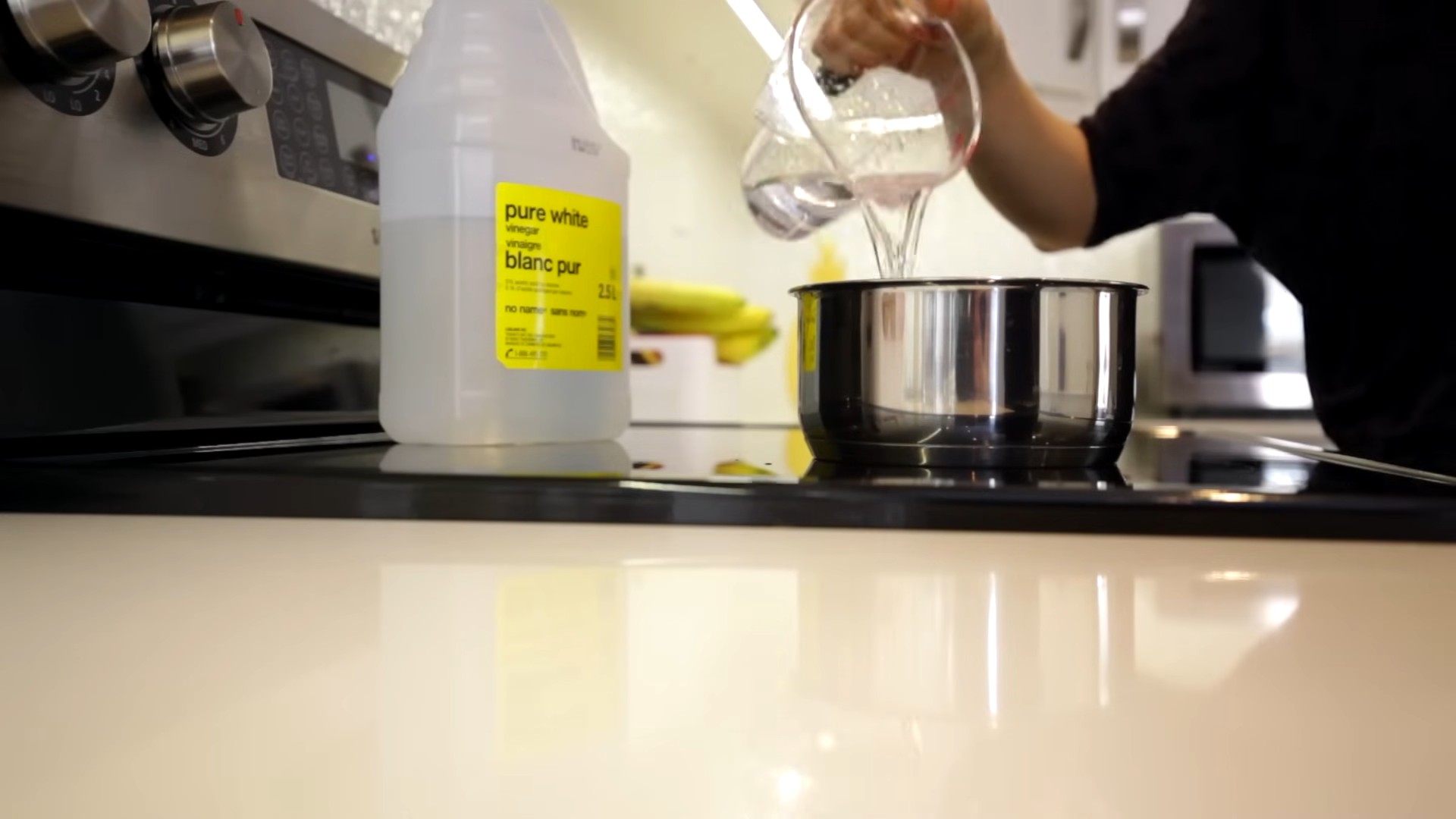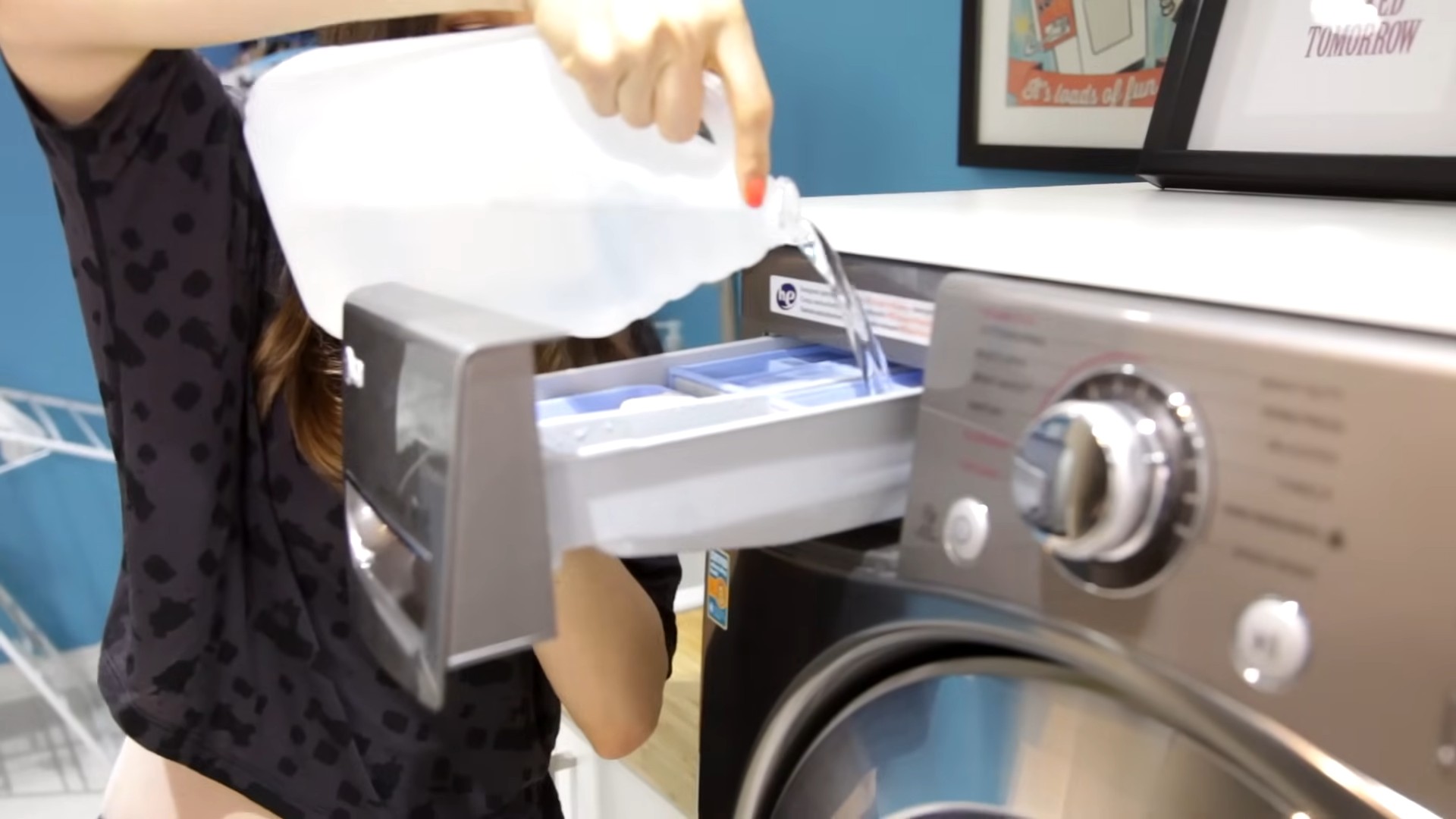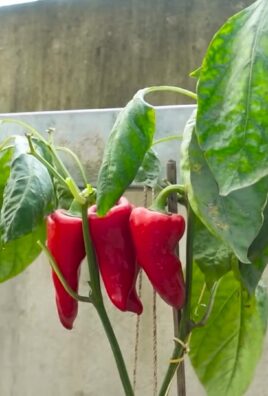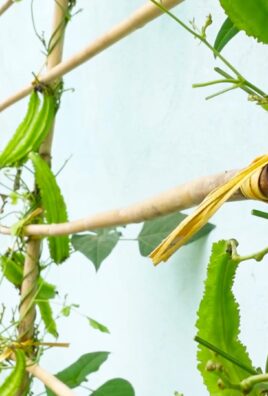Grow Bok Choy Indoors? Absolutely! Imagine fresh, crisp bok choy, ready to harvest right from your windowsill, even when the weather outside is frightful. Forget those sad, wilted greens from the grocery store. I’m going to show you how to cultivate your own thriving bok choy patch, all within the cozy confines of your home.
For centuries, bok choy has been a staple in Asian cuisine, prized for its delicate flavor and nutritional benefits. From stir-fries to soups, this versatile vegetable adds a delightful crunch and a boost of vitamins. But you don’t need a sprawling garden to enjoy its goodness. In fact, the practice of growing vegetables indoors has gained immense popularity, especially in urban areas where space is limited.
Why should you learn these DIY tricks for growing bok choy indoors? Well, for starters, it’s incredibly rewarding! There’s nothing quite like nurturing a plant from seed to harvest. Plus, you’ll have access to fresh, organic produce year-round, saving you money and reducing your reliance on store-bought vegetables. And let’s be honest, who wouldn’t want to impress their friends and family with their green thumb? So, let’s dive in and discover the secrets to successfully grow bok choy indoors!

Grow Your Own Bok Choy Indoors: A Beginner’s Guide
Hey there, fellow plant enthusiasts! Ever thought about growing your own fresh, crisp bok choy right in your home? It’s easier than you might think, and the satisfaction of harvesting your own veggies is truly rewarding. I’m going to walk you through the entire process, from seed to stir-fry, so you can enjoy homegrown bok choy all year round.
What You’ll Need
Before we dive in, let’s gather our supplies. Here’s a checklist of everything you’ll need to successfully grow bok choy indoors:
* **Bok Choy Seeds:** Choose a variety suitable for indoor growing. Dwarf varieties like ‘Toy Choy’ or ‘Shanghai Green’ are excellent choices.
* **Seed Starting Tray or Small Pots:** These will be used to germinate your seeds.
* **Seed Starting Mix:** A light, well-draining mix is crucial for successful germination.
* **Larger Pots (at least 6 inches in diameter):** These will be the final homes for your bok choy plants.
* **Potting Soil:** A good quality potting mix that retains moisture but also drains well.
* **Grow Lights:** Bok choy needs plenty of light, so grow lights are essential for indoor growing, especially during winter months.
* **Watering Can or Spray Bottle:** For gentle watering.
* **Fertilizer:** A balanced liquid fertilizer to provide essential nutrients.
* **Spray Bottle (for pest control):** Filled with water or a mild insecticidal soap solution.
* **Well-ventilated Space:** Good air circulation is important to prevent fungal diseases.
Starting Your Bok Choy Seeds
This is where the magic begins! Getting your seeds to sprout is the first step towards a bountiful harvest.
1. **Prepare Your Seed Starting Tray:** Fill your seed starting tray or small pots with seed starting mix. Gently moisten the mix with water. You want it damp, not soggy.
2. **Sow the Seeds:** Sow 2-3 seeds per cell or pot, about 录 inch deep. Cover the seeds lightly with the seed starting mix.
3. **Water Gently:** Use a spray bottle to gently water the seeds. Avoid overwatering, as this can lead to rot.
4. **Provide Warmth and Light:** Place the seed starting tray in a warm location (around 65-75掳F or 18-24掳C). If you don’t have a naturally warm spot, you can use a heat mat. Place the tray under grow lights. Keep the lights on for about 14-16 hours per day.
5. **Maintain Moisture:** Keep the seed starting mix consistently moist, but not waterlogged. Check the moisture level daily and water as needed.
6. **Germination:** You should see seedlings emerge in about 5-10 days.
Transplanting Your Bok Choy Seedlings
Once your seedlings have developed a few true leaves (the leaves that appear after the initial seed leaves), it’s time to transplant them into larger pots.
1. **Prepare Your Larger Pots:** Fill your larger pots (at least 6 inches in diameter) with potting soil.
2. **Gently Remove Seedlings:** Carefully remove the seedlings from the seed starting tray or small pots. Try to disturb the roots as little as possible. If you planted multiple seeds in one cell, gently separate the seedlings, choosing the strongest one to transplant.
3. **Plant the Seedlings:** Make a small hole in the potting soil and gently place the seedling in the hole. Cover the roots with soil and gently firm the soil around the base of the plant.
4. **Water Thoroughly:** Water the transplanted seedlings thoroughly.
5. **Provide Light and Warmth:** Place the pots under grow lights. Continue to provide 14-16 hours of light per day. Maintain a temperature of around 60-70掳F (15-21掳C).
Caring for Your Bok Choy Plants
Now that your bok choy plants are in their final homes, it’s time to provide them with the care they need to thrive.
1. **Watering:** Bok choy needs consistent moisture, but it doesn’t like to sit in soggy soil. Water when the top inch of soil feels dry to the touch. Water deeply, ensuring that the water drains out of the bottom of the pot.
2. **Fertilizing:** Feed your bok choy plants with a balanced liquid fertilizer every 2-3 weeks. Follow the instructions on the fertilizer label.
3. **Light:** Bok choy needs plenty of light to grow well. If you’re using grow lights, keep them about 6-12 inches above the plants. Adjust the height as the plants grow.
4. **Temperature:** Bok choy prefers cooler temperatures. Aim for a temperature range of 60-70掳F (15-21掳C).
5. **Air Circulation:** Good air circulation is important to prevent fungal diseases. Make sure your plants have plenty of space around them and that the air is circulating well. You can use a small fan to improve air circulation.
6. **Pest Control:** Keep an eye out for pests like aphids, cabbage worms, and flea beetles. If you spot any pests, spray your plants with water or a mild insecticidal soap solution. You can also handpick pests off the plants. I’ve found that a strong blast of water from the hose (or a spray bottle indoors) can often dislodge aphids effectively.
7. **Weeding:** Remove any weeds that may sprout in the pots. Weeds can compete with your bok choy plants for nutrients and water.
Harvesting Your Bok Choy
The best part! You can start harvesting your bok choy when the leaves are about 4-6 inches long.
1. **Harvesting Individual Leaves:** You can harvest individual leaves as needed, starting with the outer leaves. This will allow the plant to continue growing and producing new leaves.
2. **Harvesting the Entire Plant:** You can also harvest the entire plant at once. To do this, cut the plant at the base with a sharp knife.
3. **Succession Planting:** To ensure a continuous harvest, sow new seeds every few weeks. This is called succession planting.
Troubleshooting
Even with the best care, you might encounter some problems along the way. Here are a few common issues and how to address them:
* **Yellowing Leaves:** This could be a sign of overwatering, underwatering, or nutrient deficiency. Check the soil moisture and adjust your watering accordingly. If the soil is consistently moist, reduce watering. If the soil is dry, water more frequently. You may also need to fertilize your plants.
* **Leggy Growth:** This is usually a sign of insufficient light. Make sure your plants are getting enough light, either from grow lights or a sunny window.
* **Pests:** As mentioned earlier, keep an eye out for pests and take action as soon as you spot them.
* **Fungal Diseases:** Fungal diseases can be caused by poor air circulation and excessive moisture. Ensure good air circulation and avoid overwatering.
Choosing the Right Bok Choy Variety
Selecting the right variety is key for indoor success. Here are a few of my favorites:
* **Toy Choy:** A compact, dwarf variety that’s perfect for small spaces. It matures quickly and has a mild flavor.
* **Shanghai Green:** Another excellent choice for indoor growing. It has a slightly sweeter flavor than other varieties.
* **Mei Qing Choi:** This variety is known for its beautiful light green leaves and crisp texture.
Optimizing Your Indoor Growing Environment
To really maximize your bok choy harvest, consider these tips:
* **Humidity:** Bok choy prefers slightly humid conditions. If your indoor environment is dry, you can increase humidity by using a humidifier or placing a tray of water near your plants.
* **pH Level:** Bok choy grows best in soil with a pH level of 6.0-7.5. You can test your soil’s pH using a soil testing kit.
* **Rotating Your Crops:** If you’re growing bok choy in the same pots year after year, consider rotating your crops. This can help prevent the buildup of soilborne diseases.
Enjoying Your Homegrown Bok Choy
Now that you’ve successfully grown your own bok choy, it’s time to enjoy the fruits (or rather, vegetables) of your labor! Bok choy is a versatile vegetable that can be used in a variety of dishes. Here are a few ideas:
* **Stir-fries:** Bok choy is a classic ingredient in stir-fries. Simply chop it up and add it to your favorite stir-fry recipe.
* **Soups:** Bok choy can also be added to soups. It adds a nice crunch and a mild flavor.
* **Salads:** Young, tender bok choy leaves can be used in salads.
* **Steamed:** Steamed bok choy is a simple and healthy side dish.
* **Grilled

Conclusion
So, there you have it! Growing bok choy indoors is not only achievable but also incredibly rewarding. We’ve walked you through the process, from selecting the right seeds and preparing your growing medium to providing the optimal light and watering conditions. But why is this DIY trick a must-try?
Firstly, it offers a continuous supply of fresh, crisp bok choy right at your fingertips, regardless of the season. Imagine adding vibrant, homegrown greens to your stir-fries, salads, and soups whenever the craving strikes. No more last-minute trips to the grocery store or settling for wilted, less-than-perfect produce. The convenience alone makes it worthwhile.
Secondly, growing your own bok choy allows you to control the entire process, ensuring that your vegetables are free from harmful pesticides and herbicides. You know exactly what’s going into your food, promoting a healthier lifestyle for you and your family. This peace of mind is invaluable.
Thirdly, it’s a fantastic way to connect with nature, even within the confines of your home. Nurturing a plant from seed to harvest is a deeply satisfying experience, offering a sense of accomplishment and a welcome break from the digital world. It’s a therapeutic hobby that can reduce stress and boost your mood.
But the benefits don’t stop there. Growing bok choy indoors is also a sustainable practice, reducing your carbon footprint by minimizing transportation and packaging waste. You’re contributing to a more environmentally friendly lifestyle, one delicious leaf at a time.
Now, let’s talk about variations. While we’ve focused on the basics, there’s plenty of room for experimentation. Try different varieties of bok choy, such as baby bok choy or Shanghai bok choy, to discover your favorite flavor profiles. You can also experiment with different growing mediums, such as hydroponics, for a soilless approach. Consider adding companion plants like basil or chamomile to your indoor garden to deter pests and enhance the flavor of your bok choy.
Don’t be afraid to get creative and personalize your growing experience. The possibilities are endless!
We understand that embarking on a new gardening adventure can be daunting, but we encourage you to take the plunge. The rewards are well worth the effort. Start small, be patient, and don’t be discouraged by initial setbacks. Every gardener learns through trial and error.
So, are you ready to transform your windowsill into a miniature bok choy farm? We certainly hope so! Grab your seeds, prepare your growing medium, and get ready to enjoy the freshest, most delicious bok choy you’ve ever tasted.
And most importantly, we want to hear about your experience! Share your photos, tips, and challenges in the comments section below. Let’s create a community of indoor bok choy enthusiasts and learn from each other. Your insights could inspire others to embark on their own gardening journeys. Let us know if this DIY trick worked for you! Happy growing!
Frequently Asked Questions (FAQ)
What is the best variety of bok choy to grow indoors?
While most bok choy varieties can be grown indoors, some are better suited than others. Baby bok choy is a popular choice due to its compact size and relatively quick growth rate. Shanghai bok choy is another excellent option, known for its mild flavor and tender leaves. Dwarf varieties are also well-suited for indoor containers. Ultimately, the best variety depends on your personal preference and the space you have available. Consider trying a few different varieties to see which one thrives best in your indoor environment.
How much light does bok choy need when grown indoors?
Bok choy requires at least 6 hours of direct sunlight per day to thrive. If you don’t have a sunny windowsill, you’ll need to supplement with artificial lighting. Fluorescent grow lights or LED grow lights are excellent options. Position the lights a few inches above the plants and keep them on for 12-14 hours per day. Monitor your plants closely and adjust the lighting as needed. Signs of insufficient light include leggy growth, pale leaves, and slow development.
What type of soil is best for growing bok choy indoors?
Bok choy prefers well-draining, nutrient-rich soil. A good potting mix specifically formulated for vegetables is ideal. You can also create your own mix by combining equal parts of potting soil, compost, and perlite or vermiculite. The compost provides essential nutrients, while the perlite or vermiculite improves drainage and aeration. Avoid using garden soil, as it can be too heavy and may contain pests or diseases.
How often should I water my indoor bok choy plants?
Water your bok choy plants regularly, keeping the soil consistently moist but not waterlogged. Check the soil moisture level daily by sticking your finger about an inch into the soil. If it feels dry, it’s time to water. Water deeply, allowing the excess water to drain out of the bottom of the pot. Avoid overhead watering, as this can promote fungal diseases.
What are some common pests and diseases that affect indoor bok choy?
Common pests that can affect indoor bok choy include aphids, spider mites, and whiteflies. Regularly inspect your plants for signs of infestation, such as small insects, webbing, or sticky residue. If you spot any pests, treat them promptly with insecticidal soap or neem oil. Fungal diseases, such as powdery mildew, can also be a problem. Ensure good air circulation around your plants and avoid overwatering to prevent fungal growth.
How long does it take to harvest bok choy grown indoors?
Bok choy typically takes 30-50 days to mature, depending on the variety and growing conditions. You can start harvesting the outer leaves when they are about 6 inches long. Alternatively, you can harvest the entire plant when it reaches its full size. To harvest, simply cut the leaves or the entire plant at the base with a sharp knife.
Can I grow bok choy indoors year-round?
Yes, you can grow bok choy indoors year-round, provided you provide the necessary light, water, and nutrients. Indoor growing allows you to control the environment, protecting your plants from extreme temperatures and weather conditions. With proper care, you can enjoy a continuous supply of fresh bok choy throughout the year.
How do I fertilize my indoor bok choy plants?
Bok choy is a heavy feeder and benefits from regular fertilization. Use a balanced liquid fertilizer, such as a 10-10-10 or 20-20-20 formula, diluted to half strength. Fertilize your plants every two weeks, following the instructions on the fertilizer label. Avoid over-fertilizing, as this can burn the roots and damage the plants.
What size pot is best for growing bok choy indoors?
Choose a pot that is at least 6 inches deep and wide for individual plants. If you’re growing multiple plants in the same container, provide ample space between them to allow for proper growth. A 12-inch pot can accommodate 2-3 bok choy plants. Ensure that the pot has drainage holes to prevent waterlogging.
How do I prevent my bok choy from bolting (going to seed) indoors?
Bolting is often triggered by stress, such as high temperatures or insufficient water. To prevent bolting, keep your bok choy plants cool and well-hydrated. Provide adequate shade during the hottest part of the day and water regularly to maintain consistent soil moisture. Harvesting the outer leaves regularly can also help prevent bolting.





Leave a Comment